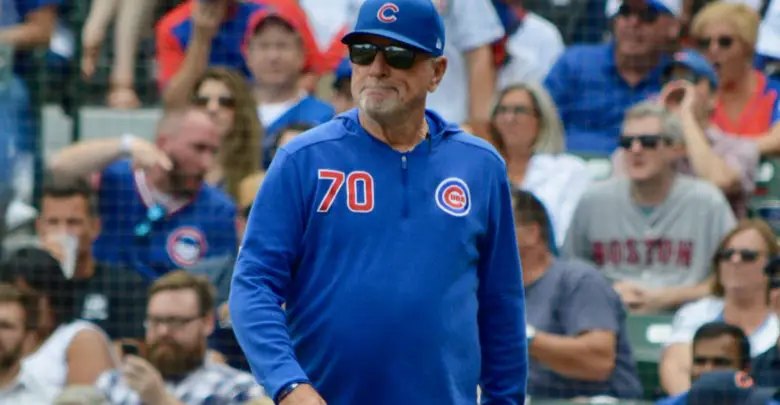
Cubs Among MLB’s Worst Teams for Grounders, Hard Contact Yet Again
If it feels as though the Cubs have an uncanny ability to come up with groundballs at the most inopportune times, that’s because they do. With a 45.8% mark on the season, the Cubs beat more balls into the ground than all but the Pirates (46.6), White Sox (46.9), and Marlins (48.6). That’s only a slight improvement over last season, when the Cubs’ 46% grounder rate was third-worst in the league.
Even with the juiced ball toppling team and league home run records, the Cubs have somehow managed to hit more grounders over the past two seasons than in the first three of this vaunted competitive window. But wait, I thought the maturation of their hitters and all this highly publicized hands-on instruction from Joe Maddon was supposed to yield better production.
The general inability to produce consistent offensive results has been a hallmark of this team over the past two seasons and it’s what has led to them sputtering through the last two Septembers. Grounders are up, fly balls are down, and line drives have stayed more or less static over the last five seasons. That obviously wasn’t part of the plan Theo Epstein laid out last October.
“The core offensive philosophy of this organization remains unchanged,” Epstein said. “We want to be selectively aggressive, get pitches we can drive, and drive them hard in the air. Including out of the ballpark. Line drives.
“We want to have professional at-bats, be relentless, and [with] that selectively aggressive approach you’re gonna draw walks. We should be getting on base a ton, leading the league in on-base percentage as we were at the All-Star break.”
The Cubs are at least close to the league lead in OBP, boasting a .332 mark that sees them fourth in the Senior Circuit. Only trouble is, the how and where of their batted-ball profile leaves a lot to be desired when it comes to driving those baserunners home. More than an increase in grounders, the Cubs have seen a relative drop in their hard contact since 2015.
But Evan, the Cubs’ hard contact has gone up in each of the last five seasons. True though that may be, Maddon’s teams have not improved at a rate commensurate with the rest of the league and currently sit 26th in MLB with 34.9% hard contact. League average this year is 38%, if you were wondering. That 2015 breakout in Maddon’s first year was actually the only time the Cubs have exceeded the MLB average for hard contact, with the last two seasons seeing them more than three percentage points off the pace.
Even if you aren’t keen on any stats that don’t show up in a box score, it’s painfully evident that the metrics above match the eye test results from the past two seasons. Same goes for common sense of the sort Ted Williams employed in his day: Hit it hard and hit it in the air. The Cubs aren’t doing either, or at least they’re not hitting the ball as hard as their peers over the same period of time. Simply put, they’ve regressed when it comes to putting the ball in play.
Hence the bad luck that seems to befall them more regularly and with frustrating predictability. Good teams tend to get the lucky bounces, have the little breaks their way. But luck is really just a way to describe the confluence of preparation and opportunity, the latter of which the Cubs have pissed away at an alarming rate. You can see that in their BABIP, which sits below .300 this season for the first time since 2014.
That doesn’t seem like much until you consider the impact just a few points can have over the entire season. For the sake of ease, we’ll just say there are an average of 15 batted-ball events each game, giving us 2,430 for the season. The difference between a modest .302 BABIP in 2016 and the .296 they’ve put up this season is 15 hits, which seems nominal on the surface. But how many of those would have come with runners on base or might have been doubles in the gap instead of finding gloves? Rallies are extended, runs are scored, losses become wins.
This doesn’t come down to just the manager or the hitting coach or a couple players, it’s clearly an organizational issue. The Cubs caught lightning in a bottle a few years ago and simply haven’t adjusted appropriately to changes in both the composition of the baseball and how it’s being thrown to them. As such, they’ve fallen behind the rest of the league during a time almost everyone expected them to be better.
A failure to meaningfully address these shortcomings this winter will mean yet another disappointing season in 2020. Or maybe they can just add some ancillary pieces and hope all the big talk about edge and urgency will magically translate to results this time.

